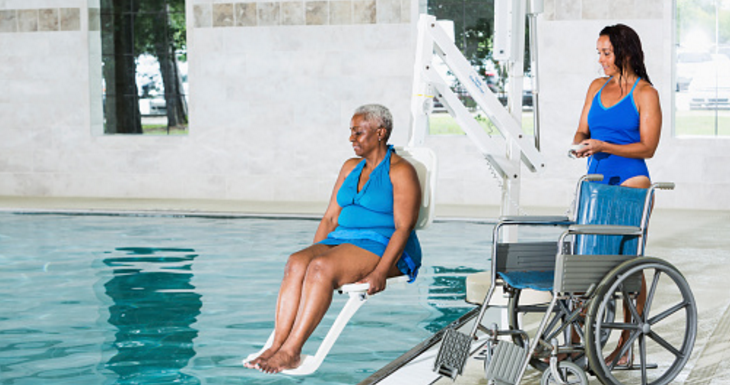Guest Blogger: Carolyn Rocca, Student Occupational Therapist
The differences and similarities between Occupational Therapy and Physiotherapy have long been confused. This makes sense, especially since both professions ultimately started as “POT”, meaning people studied to be a Physical and Occupational Therapist and worked in a dual role, providing both. However, since the mid-1970’s the roles have been separated and yet people still confuse the two. I am still often asked “oh, so you are like a physiotherapist”…followed typically by a question about some ailing body part.
Although both Occupational Therapy (OT) and Physiotherapy (PT) are registered healthcare professions specifically in the domain of rehabilitation, each profession has it’s unique role and purpose in one’s recovery following injury or illness, as well as in the prevention of disease, further injury, and disability.
There is no single way to define or categorize each profession. However, the Canadian Association of Occupational Therapists (CAOT) describes OT as the art and science of enabling engagement in everyday living by empowering people to participate to their potential in the daily occupations that foster health and well-being (Townsend & Polatajko, 2013, p. 380). In the OT profession, the term occupation is considered everything that people do throughout the course of their lives that is considered essential to their health and well-being (i.e. how people “occupy” their time). For example, an occupation can range from one’s ability to shower and groom themselves, to their ability to carry out their role as a parent, spouse, or employee.
Therefore, OTs are trained to assess and help clients identify areas in their lives that have been impacted following injury or illness, such as their ability to care for themselves, care for their families, manage their households, perform at work or school, and participate in volunteer or leisure activities. An OT would then assist their clients in building goals around those areas that are important to them, and to then provide recommendations, strategies, assistive devices, and education in order to find solutions to these day to day challenges.
Whereas, the Canadian Physiotherapy Association (CPA) describes PT as a client-focused health profession dedicated to improving quality of life by: promoting optimal mobility, physical activity, and overall health and wellness, and improving and maintaining optimal functional independence and physical performance (CPA, 2012). Therefore, PTs are experts in human anatomy and the functioning of the many systems within our bodies.
Their role involves conducting detailed and holistic assessments of their clients’ movement, mobility, and functioning, creating rehabilitation goals for recovery with their clients, followed by developing personalized intervention plans. PT intervention can include education, individualized therapeutic exercise geared towards increasing strength and range of motion, manual therapy techniques such as massage and manipulation, the use of modalities including ultrasound and electrical stimulation, and the prescription of assistive equipment.
While both professions consider the physical, social, psychological and emotional well-being of their clients, one primary difference between the professions is that PTs are trained to recognize when there is a need for specialized mental health treatment, and subsequently refer their client to an appropriate healthcare provider, whereas OTs are trained to assess and provide treatment for mental health conditions. This treatment can consist of teaching and practicing coping strategies by providing counselling and psychoeducation. Further, while a PT may recognize and understand how someone being unable to walk impacts work and home, the OT will help people to “manage in the meantime”. So, while you are building your strength and endurance on that broken leg through physio, your OT will help you to manage other important tasks in a modified fashion when at home, work, school or in the community.
Nevertheless, perhaps the largest difference between the professions is that a PT tends to treat the client’s actual impairment, while an OT tends to help the client complete everyday tasks with the impairment. For example, consider a client who has undergone surgery for a hip replacement. Throughout their recovery, a PT might prescribe an individualized at home exercise program to gradually stretch and strengthen the hip in order to prevent deconditioning and to rebuild the muscles needed for walking. A PT will also be vital in terms of educating them on the proper use of crutches in order to safely move around their environment. Meanwhile, an OT will be an essential part of this client’s recovery as they likely require specialized bath equipment for safe showering, adaptive devices for putting on socks and shoes, and education in terms of strategies to transfer safely into and out of their car. Essentially the OT would focus on getting the client back to their day to day tasks and life roles despite the limitations presented by their impairment.
All in all, even with their unique roles, the OT and PT professions do have similarities. Both OTs and PTs can be accessed in hospitals, community care, private practice, rehabilitation centres, family health teams, long term care centres, and school health. Additionally, both professions are client-centred, meaning they focus on what is important to the client, and on maximizing their independence, safety, and function. Neither require a referral, so people can ask for, and receive these therapies without a referral. Despite these similarities, their above highlighted differences allow each profession to offer distinct roles, meaning PT or OT, both or neither may be most appropriate for you. Overall, both OTs and PTs are vital members of healthcare teams and together they offer many needed services throughout the rehabilitation process.
Resources & References
Canadian Association of Occupational Therapists (CAOT) website: http://www.caot.ca/default_home.asp?pageid=2412
Canadian Physiotherapy Association (CPA) website: https://physiotherapy.ca/
Canadian Physiotherapy Association (CPA) (2012). Description of physiotherapy in Canada. Retrieved from https://physiotherapy.ca/sites/default/files/site_documents/dopen-en.pdf
Townsend, E. A., & Polatajko, H. J. (2013). Enabling occupation II: Advancing an occupational therapy vision for health, well-being, & justice through occupation. Ottawa, ON: CAOT Publications ACE.













